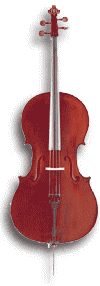




Claude Debussy (1862-1918)
The classical music composer, Claude Debussy, is described in detail here; Debussy's life and music, in classical midi music form, is here for you. Midi music of Debussy, and Debussy's life story...for you.
 The music of Claude Debussy had a monumental impact on Western music, in that it
revolutionized how musicians approached harmony, tonality and rhythm. Composers as
diverse as Ravel, Stravinsky and Satie owe him acknowledgement, and rafts of writers
who were to come after Debussy's all-too-brief career could not help but be influenced by
his unique musical style. In a time when European music was rife with change - from the
earth-shaking music of Richard Wagner to the harmonic adventures of many late
Romantics - and literary movements vied for intellectual hegemony, Debussy represented
one of the most potent marriages of programmatic elements and musical innovation. The
only true musical Impressionist, he was as influenced by literary Symbolism and
Impressionism as much as he was by the greatest Romantic composers, particularly
Chopin, Liszt and Mussorgsky.
The music of Claude Debussy had a monumental impact on Western music, in that it
revolutionized how musicians approached harmony, tonality and rhythm. Composers as
diverse as Ravel, Stravinsky and Satie owe him acknowledgement, and rafts of writers
who were to come after Debussy's all-too-brief career could not help but be influenced by
his unique musical style. In a time when European music was rife with change - from the
earth-shaking music of Richard Wagner to the harmonic adventures of many late
Romantics - and literary movements vied for intellectual hegemony, Debussy represented
one of the most potent marriages of programmatic elements and musical innovation. The
only true musical Impressionist, he was as influenced by literary Symbolism and
Impressionism as much as he was by the greatest Romantic composers, particularly
Chopin, Liszt and Mussorgsky.Debussy was born in Paris in 1862, and received his formal musical education at the Paris Conservatoire, where he was trained in traditional Romantic techniques and sonorities. A facile and talented composer, he was early on enough of a traditionalist to win First Prize at the 1884 Prix de Rome competition - the same contest that Debussy's brilliant contemporary, Ravel, would enter several times but never win, in part due to Ravel's revolutionary sense of harmony and rhythm. Soon after this triumph, however, Debussy started to reject many of the precepts of his training, including the importance of the Germanic musical tradition, of which Wagner was the most oft-cited example.
As Debussy set off to write his own style of music, he found himself in the heady cultural
hotbed of late-19th century Parisian society, a climate enriched by Russian music,
non-western idioms demonstrated at the Paris Exposition of 1889, and Symbolist poetry,
as well as a revolution in visual arts. Paris was a remarkable melting pot of cultural
diversity and artistic influence, and the young Debussy began to make these influences
heard in his music, which placed an emphasis on aural images, clusters and metaphors
rather than on traditional musical devices.  His early, pre-Impressionist compositions for
piano are remarkable in their craft, especially the Suite bergamasque (1893). The same
year, he premiered the seminal Quartet in G minor for Strings, and people started to
scratch their heads in confusion, so novel was Debussy's sound. Critics complained that
Debussy was a self-indulgent non-conformist. The next year brought the brilliant
Prélude à l'après-midi d'un faune (Prelude to the Afternoon of a Faun), Debussy's first
orchestral work and a masterpiece of novel ensemble texture and harmonic innovation.
The work was inspired by a Stephane Mallermé poem of the same name, and the music
roughly evokes each scene in the poem.
His early, pre-Impressionist compositions for
piano are remarkable in their craft, especially the Suite bergamasque (1893). The same
year, he premiered the seminal Quartet in G minor for Strings, and people started to
scratch their heads in confusion, so novel was Debussy's sound. Critics complained that
Debussy was a self-indulgent non-conformist. The next year brought the brilliant
Prélude à l'après-midi d'un faune (Prelude to the Afternoon of a Faun), Debussy's first
orchestral work and a masterpiece of novel ensemble texture and harmonic innovation.
The work was inspired by a Stephane Mallermé poem of the same name, and the music
roughly evokes each scene in the poem.
Later works exhibited a more fully-developed "Impressionistic" style - notably Estampes, Images, and La Mer. Another seminal work was Debussy's one opera, Pelléas et Mélisande (1902), wherein he used musical imagery and dramatic devices that flew in the face of Wagner's dominant style. Later pieces ushered in such radical tonal juxtapositions that Debussy is often cited as the father of atonality - which at that time was new and unchartered territory.
Perhaps Debussy's greatest achievement as a composer - and there were many - is his development of timbre. Although the tonal relationships and harmonic content of music were of the utmost importance to him - and his contributions in this area were original and profound - Debussy also created a revolution in the area of pure sound. He combined different instruments in ways that produced radical new textures; his sense of register (what range an instrument plays in) was utterly original; and his free-associating, uninhibited tonal colors influenced virtually every composer who followed him. For this and many other trends in 20th century music, we owe Debussy our gratitude. His works sound today as fresh and new as they did 100 years ago, a remarkable testament to a unique and original musical imagination.
 Arabesque No. 1 Arabesque No. 1 |
 Prelude a l'apresmidi d'un faune Prelude a l'apresmidi d'un faune |
[Top of Page]
Copyright © 1998 by Mr. Maestro, All Rights Reserved.





